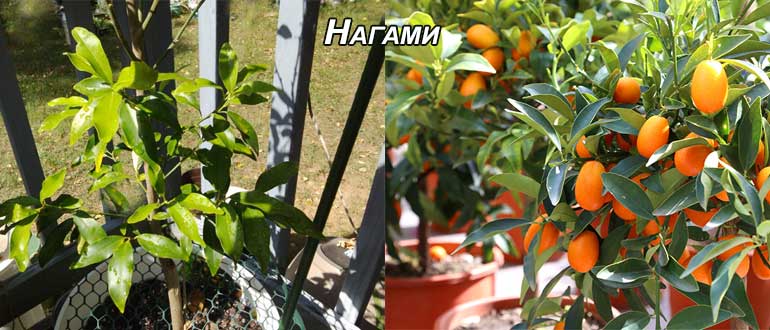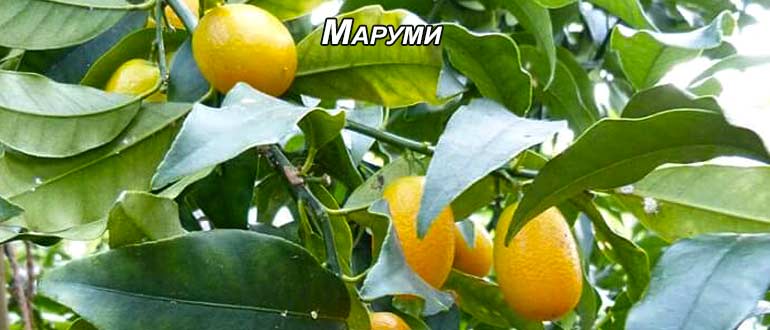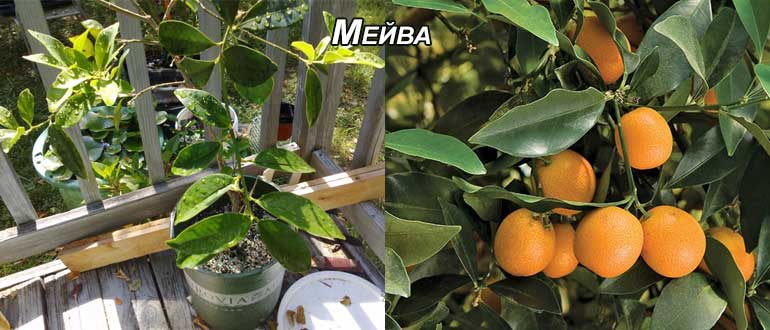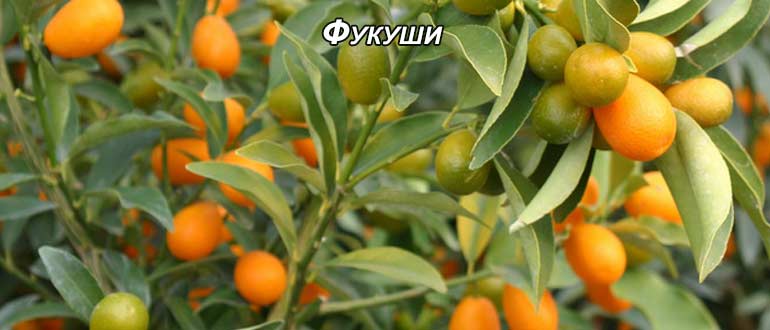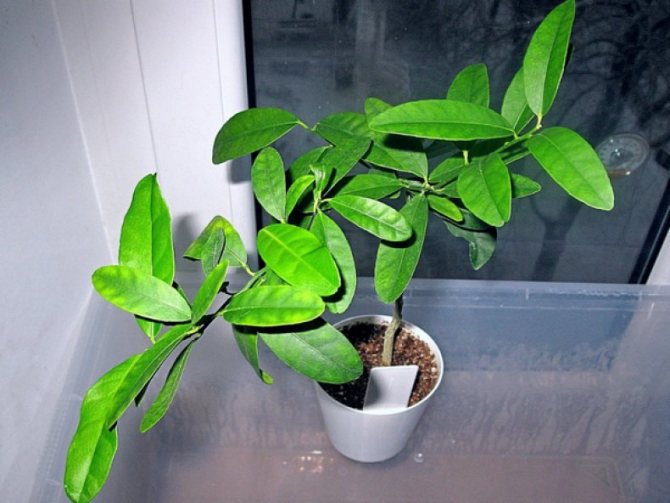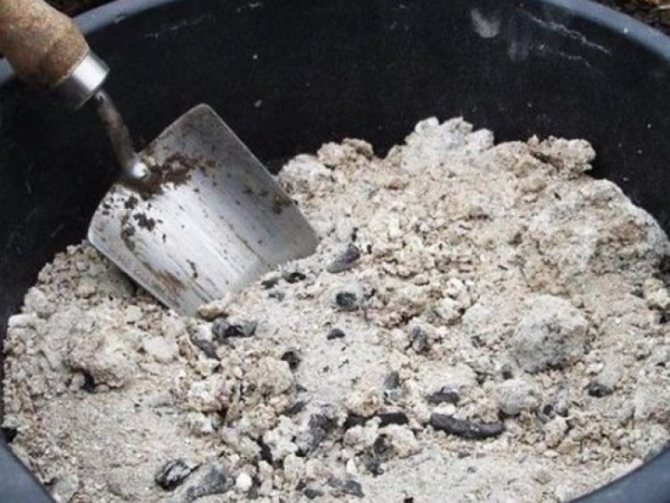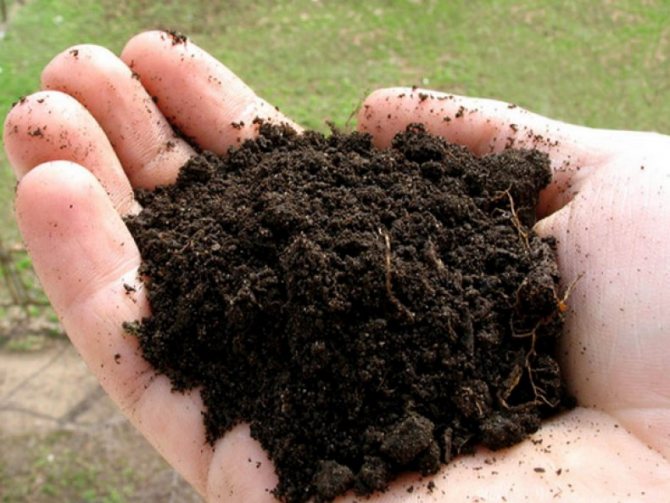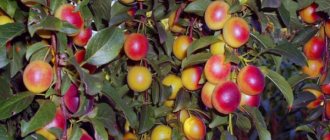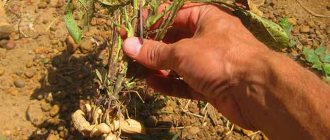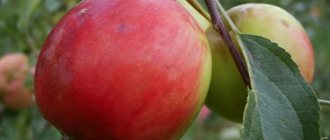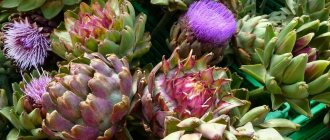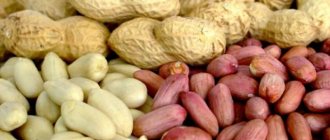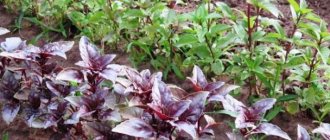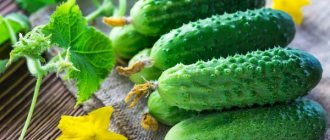Citrus
You will not surprise anyone with exotic citrus plants in the house today. Evergreen trees with a beautiful crown and bright fruits add a special comfort to the home and fill it with a fruity aroma. One of the most unusual citrus fruits is fortunella, or kumquat. The Japanese call this culture "kinkan", which means "golden apple". Growing a kumquat at home is no more difficult than a lemon or an orange, and by providing it with good care, you can enjoy not only the decorative appearance of the tree, but also the delicious taste of its fruits.
Kumquat: what is this fruit?
Now we are used to a wide assortment of familiar and exotic fruits on store shelves. The latter include the Kumquat, Fortunella or Kinkan. These are small oblong citruses with light yellow to orange skin. You can eat them, or more correctly, you need to eat them together with the peel. Inside there are 5 lobules and several small bones. The sour taste of the pulp is ideally combined with the sweet-tart skin. Fresh, dried and dried kumquat fruits are on sale.
Homeland of the plant
The homeland of the kumquat is China. There the plant is called kinkan, which means golden oranges or golden apples. In the natural environment, it is found in countries with a subtropical climate, namely in Japan, India, in Southeast Asia, begins to explore the vastness of the Mediterranean and the United States. The first mention of kinkan dates back to the 12th century.
Another seven centuries, i.e. until the middle of the XIX century. the fruit was unknown to Europeans. Thanks to the Scottish botanist Robert Fortune, who described and brought exotic to England in 1846, an acquaintance took place. The orange mini-fruit and the citrus genus Fortunella were named in memory of the scientist.
The average lifespan of a kumquat is 40 years. The height of the tree is from 2.5 to 4 m. It has a lush, rounded crown, the branches are strong and flexible at the same time. The leaves are oblong, rich emerald color, shiny.
By the middle of summer, the picture will be harmoniously complemented by snow-white five-petal corollas, like a scattering of stars. Fruit will appear in late autumn.
Fruiting lasts from about November to April. During this time, one tree will produce several hundred or a thousand citruses. They are small: about 5 cm long and 3 cm across, weighing about 30 g.
The fruit is protected by a dense but thin skin. Depending on the variety, the palette of shades from pale yellow to rich orange. With any method of growing, kumquat does not absorb nitrates from the soil, therefore, there is no harmful substance in the pulp and skin of the fruit. This property is unique and is a positive feature under the current environmental conditions.
A compact tree with citrus fruits, which have the richest vitamin composition, can be grown at home.This article describes in detail the characteristics of the fruits (chemical composition) and the peculiarities of cultivating kumquat in pots or tubs.
Description of the variety
Limequat or limonella is a citrus hybrid plant that is the result of crossing lime and kumquat. Previously, limequat stood out in a separate genus - citrofortunella. But now this classification is not used.
The citrus limequat hybrid was developed in the early 20th century.At the moment, three varieties are common: Youstis, Likeland, Tavares. The first two types of limequat are great for decorative cultivation at home.
Characteristics of the tree
Description of the limequat plant:
- It is not very tall, no more than 2.5-3 m in height.
- The crown is branched.
- The bark is dark brown with small thorns on the branches.
- Leaves are dense, elongated, with a pointed tip, green in color.
- Flowers are white. Flowering time - end of February - March.
- High fruiting rate.
- Fruit ripening period - September-early October.
- Limequat is more frost-hardy than lime, but inferior to kumquat. The plant can withstand temperatures down to -30 ° C well.
Fruit characteristics
Limequat, like all citrus fruits, has hesperidia fruits. This term is understood as fruit, which consists of three parts: hard peel, juicy pulp, and seeds.
Description of Hesperidium limequat:
- size - small, up to 6 cm;
- shape - ovoid;
- the pulp is juicy, greenish-yellow;
- the taste of the pulp is bittersweet, more intense than that of lemon or lime;
- the peel is of medium thinness, green in color with a slight yellowish tinge, sweetish in taste;
- the aroma is reminiscent of lime.
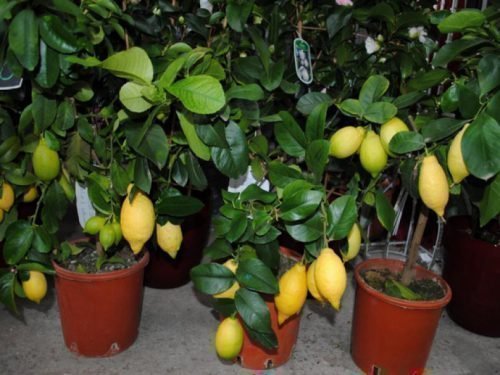
The Tavares variety differs in appearance. The fruits of this limequat are larger in size with an orange-yellowish peel. The flowers of the Tavares trees are pink.
Limonella fruits are high in vitamins. Fruit juice has a tonic effect. Eating limequat contributes to:
- strengthening immunity;
- stabilization of the nervous system;
- reducing the likelihood of developing viral lesions;
- improving the work of the cardiovascular system;
- normalization of metabolic processes in the body;
- improving mood.
Limequat Youstice
Limequat Youstis is especially popular with fans of growing ornamental citrus trees at home. This type of limonella is different:
- unpretentiousness when leaving;
- beautiful, small and neat crown;
- small rounded fruits.
The main difference between Youstice limequat is the color and taste of the fruit. The rind of the hesperidium is yellow. It is subtle, aromatic and sweet. The pulp tastes sour, but the acid to sugar ratio makes the fruit edible even in its pure form.
Youstice limequat is easier to care for, which is why it is massively grown in homes and terraces. The limonella tree is also grown for home-grown fruit. Hesperidia, although inferior in quality to orange, lemon or tangerine, are perfect for making preserves, jams, fillings for cakes, drinks.
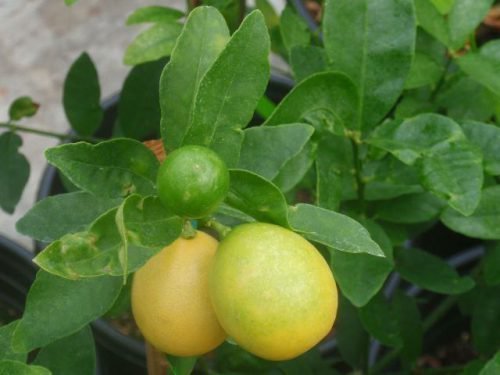

Kumquat fruit composition
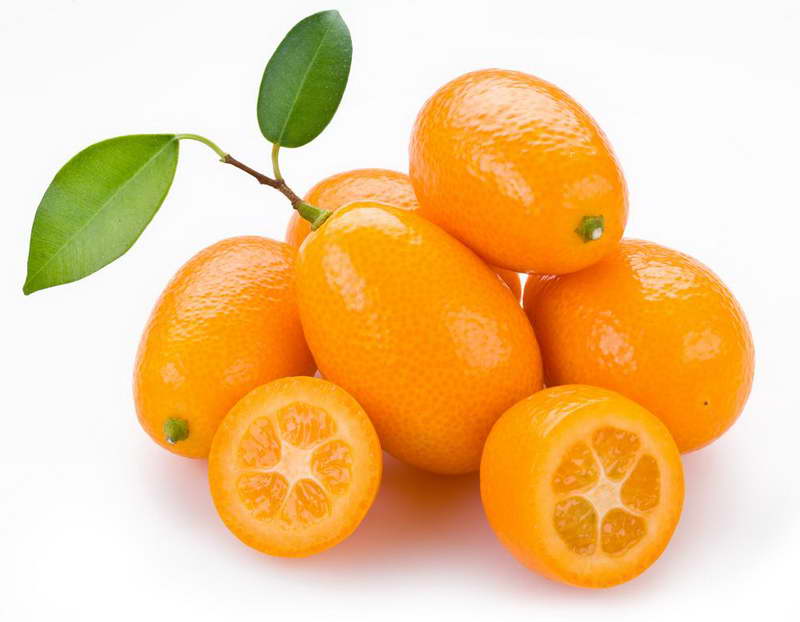

What is kumquat and how is it useful for humans
Low calorie content and rich composition of vitamins and minerals determines the usefulness of the fruit. It contains fiber, valuable organic compounds (carotene, pectin, lutein, zeakasanthin). The lion's share of the vitamin composition is assigned to vitamin C, the content of vitamins P, B3, B5, E, A is less.
Among the minerals, potassium predominates; sodium, calcium, zinc, phosphorus, iron, magnesium are also present. The whole fruit is eaten together with the peel. The latter contains copper, iron, manganese, molybdenum, polyunsaturated fatty acids, essential oils, as well as pylene, limonene, humulene, caryophyllene and bergamonene.
Golden orange contains 80% water. Diet product: 100 grams contains 71 kcal, 9.4 g of carbohydrates, 1.88 g of protein, 0.86 g of fat. The energy value of the dried fruit is higher.
Useful properties of kumquat for the human body
Due to the unique vitamin and mineral complex, the use of the fruit has a beneficial effect.
- Acts as an immunomodulator and antioxidant.A high accumulation of vitamin C acts in several ways in protecting the body: it improves cell division, gives an impetus to the immune system to fight viruses, infections, bacteria and fungi, and helps to neutralize and eliminate toxins.
- The presence of beta-carotene and vitamin A improves vision and prevents cataracts.
- Copper, iron, manganese, magnesium, folic acid contribute to the formation of red blood cells, improving the process of hematopoiesis.
- Fiber and carbohydrates, which are part of the composition, quickly satisfy hunger. Riboflavin replenishes the body's reserves for a long time.
- Vitamins and organic compounds normalize the gastrointestinal microflora. Thanks to fiber, intestinal motility increases, it is cleansed, constipation and gas formation go away. When the liver is stimulated with vitamin C, a rapid breakdown of fats occurs, toxins are removed, and metabolic processes return to normal. Respiratory protection and cleansing also occurs thanks to ascorbic acid.
- Parasites and fungi are killed by the organic matter of furacumrin. Viruses are destroyed thanks to the essential oils in the skin.
- There is a calming and sedative effect. B vitamins help to restore the nervous system. Aromatherapy with essential oils will eliminate bad moods and help fight depression. Brew tea from the rind, or simply lay the dried rind side by side. For sore throats and coughs, nasal congestion, inhalations with oils or peels are indicated.
- Kumquat is great as a dietary product: high water content, fiber, low calorie content.
- Neutralizes stomach discomfort and nausea. Even pregnant women with toxicosis are advised to eat kumquat in consultation with the doctor.
- It has an antioxidant effect, i.e. is a source of youth and beauty, activates the brain and relieves hangover syndrome. Amino acids and vitamins protect cells from the harmful effects of free radicals, prevent aging, and protect against age spots. The juice is a component of whitening masks and face creams. With the help of oil stretch marks are smoothed, cellulite goes away.
- The potassium content is especially high in dried fruits and eating them normalizes the work of the heart, strengthens the organ and minimizes stroke. The product helps to clear blood vessels from cholesterol, which prevents the development of atherosclerosis. Dried fruits retain the benefits of fresh, therefore it is especially important to use them in case of vitamin deficiency, in the period of colds and the course of diseases.
Dried kumquat: useful properties
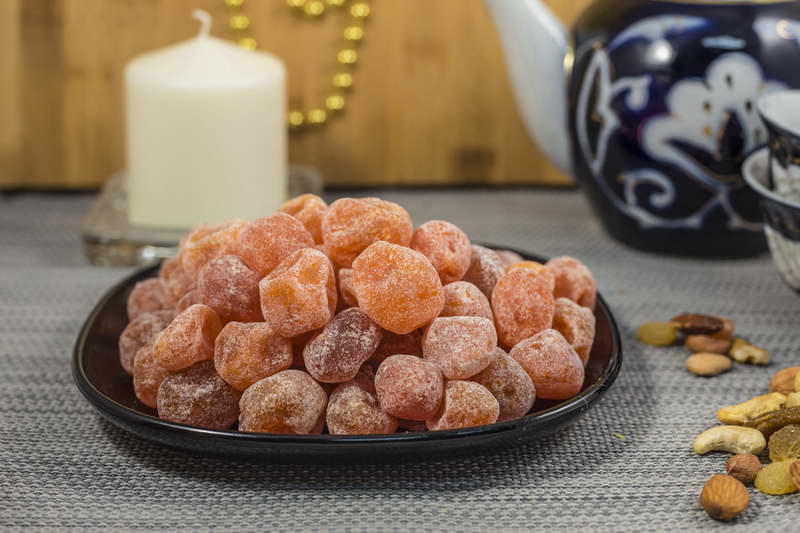

Dried kumquat useful properties
For long-term storage, the fruits of the fruit are dried, dried, canned and made from them candied fruits.
Dried kumquat is a fruit that has been dried for a long time at a temperature not exceeding 40 ° C. Fully dried citrus has a firmer texture. In both cases, the valuable composition is almost completely preserved.
Candied fruits are prepared as follows: fresh fruits must be boiled for a long time in sweet glucose syrup, then dried in powdered sugar. After this, there can be no talk of dietary properties.
The calorie content of the product will be 284 kcal per 100 g. Energy value: 0 g of fat, 80.1 g of carbohydrate, 3.8 g of protein. Indicators are characteristic of products in the preparation of which sugar was not used. Otherwise, the calorie content is much higher.
Limonella, citrofortunella (care instructions)
Landing (transplant)
The signal for transplanting a limonella plant is the appearance of root tips from the drainage holes of the pot or on the surface of the soil in which the plant grows. Young limonella plants are transplanted annually, adult plants - after 3 - 4 years, using the transshipment method.To transplant limonella plants, you need: - a pot made of any material, the shape of the pot must be cylindrical (there must be drainage holes in the bottom), the volume must be 50% larger than the previous one; - fine gravel and river sand for drainage; - pre-prepared soil. To transplant a limonella seedling, you need a specially prepared soil for citrus fruits, for example, "Lemon", it is presented on our website in the section "Soils and fertilizers for indoor plants" - "Soils for indoor plants". Or prepare the soil for limonella yourself: for transplanting, you need to take land from under deciduous trees in a deciduous forest or park, except for oak, chestnut, poplar and walnut. It is necessary to take only the upper, most fertile soil layer, 5-10 cm thick, without fresh fallen leaves. Add river sand, ash and humus to this land. The proportion of soil for limonella is as follows: two portions of deciduous soil, one portion of sand, 0.5 portions of humus and ash. At the bottom of the pot of the limonella plant, place fine rubble as drainage, and pour river sand on top of it. The thickness of the drainage should not exceed 3 - 5 cm. Pour soil 3 - 5 cm thick into the pot, for the drainage, place the limonella plant in the pot, sprinkle it with soil, while lightly tamping. When transplanting limonella, it is IMPORTANT not to deepen the plant, i.e. the top layer of soil in which the plant grew should not be below the level of the filled up soil. Sprinkle the transplanted limonella plant and sprinkle it with a slightly pink solution of potassium permanganate (potassium permanganate).
Reproduction
The limonella plant propagates mainly by grafting on seedlings or by air layers.
Lighting
Choosing the right location for your limonella plant is important. Do not use a window sill for this. Position the limonella plant so that the leaves are exposed to as much sun as possible, but do not place it closer than 1.5 meters to central heating or heating appliances. The best option for a limonella seedling is a room with south-facing windows. In summer, it is recommended to take the limonella sapling outdoors - in the garden, on the veranda, on the balcony, placing it in a place protected from the wind. It should be remembered that with a lack of sunlight, limonella fruits have increased acidity. In winter, when there is little light and the daylight hours are short, the limonella plant can be illuminated by increasing the length of the day to 10 - 12 hours.
Air temperature
The ideal conditions for the development of a limonella plant is a warm and humid climate, with an air temperature in the summer of up to + 35 ° C and an air humidity of 65 - 80%, in winter it is advisable to keep the limonella plant at a temperature not higher than + 10 - 15 ° C. It should also be noted that a limonella seedling can withstand a short-term drop in temperature to 0 ° C.
Watering
In spring, summer and in the first half of autumn, the limonella plant needs to be watered as the topsoil dries out, preventing the clod of earth in the pot from completely drying out. To determine the moisture content of the limonella soil, take the time to take a little surface layer of soil with three fingers every day and squeeze it. If the lump crumbles, it is time to water, otherwise, it is not necessary. You need to monitor the condition of the limonella soil daily (especially in summer) so that the entire earthen lump does not dry out from the high temperature and bright sun in the pot. In winter, a limonella seedling is dormant, its growth processes are inhibited and, accordingly, it requires less water. Therefore, the intervals between watering should be increased. The question of where to get water for watering and spraying the limonella plant, and what it should be, is also very difficult and therefore we will dwell on it in detail.In a city apartment, drinking water is practically unsuitable for limonella plants, since it contains a large amount of compounds of alkaline earth metals and chlorine, which together and individually cause great harm to the seedling. Many sources recommend boiling water for limonella from the tap, but this does not always lead to the desired result immediately, unnecessary hassle often scares off potential indoor crop lovers, so it is best to take hot tap water. This water contains less chlorine and is softer. But even hot water must be defended for at least a day in an open vessel to completely remove chlorine, which is harmful to limonella plants. In rural areas, water can be taken from a well, but it is better from a lake or stream and left in the room for heating. Rainwater now contains a lot of harmful impurities, so do not collect it. In any case, wherever the water is taken, it must be left for at least a day in an open vessel at room temperature.
Choosing a kumquat correctly
To get the gastronomic pleasure of kumquat instead of disappointment, you need to know the characteristics of a quality product. Fresh fruit should be firm and firm, have a rich orange hue, and exude a light citrus aroma. Spots, scuffs and a violation of the integrity of the peel make you refuse to buy. Excessive softness indicates that the product is stale and begins to deteriorate. Hard kumquat is not ripe, it will not be able to give a unique palette of taste.
When choosing dried fruits, pay attention to the rind. The presence of whitish spots indicates treatment with anti-mold chemicals. Uncolored fruits of a natural yellow, orange hue are healthier. Naturally prepared dried fruits retain their citrus aroma and acquire a subtle mint note.
How to eat kumquat properly
The fruit of the golden orange is eaten with the zest. This is how the magnificent tandem of the sourness of the pulp and the sweet-tart note of the peel is felt. At will, it is purified, but is it necessary, given the usefulness?
Fresh fruit can be frozen and stored for up to six months.
They add fruit to desserts, ice cream, porridge, smoothies, cocktails. Marmalade, preserves, jams, syrups and juices are prepared from kumquat, put in baked goods as a filling. They are an excellent base for sweet and sour sauces, suitable for fish, seafood, meat. Poultry, fish, vegetables are baked with chopped kumquat pieces. Citrus is used in the aromatization of liqueurs, it is suitable as an appetizer for champagne, wine, vermouth.
Dried kumquat is also added to baked goods. It is more suitable as a tasty and healthy alternative to sweets, combined with tea and coffee. Drinking spicy green or black tea with kumquat zest will enrich your body with vitamins. With regular use, you will forget about colds, depression and poor metabolism.
There are many recipes using both fresh and dried kumquat. Moderation should be observed to avoid negative consequences. You can eat 2-3 fresh fruits per day and 2 times more dried or dried ones.
What to do with the fruits
The main reason for growing Youstis limonella is healthy fruits, of which several dozen can be harvested from one bush. Fruits, similar to small lemons or yellow limes, with a sweet skin and sour flesh, are successfully added to a variety of dishes.
Fruit picking is usually carried out in September, ripe fruits fall off, but they can be plucked as needed.
Fresh limonella will keep in the refrigerator for up to 3 weeks. The term can be increased to six months if the fruit is frozen. Another way of saving is jam from limequat pulp and zest or candied fruits from its rind.
Kumquat harm
Like all citrus fruits, kinkan is an allergen. When trying the fruit for the first time, introduce it into the diet in small portions and gradually.During pregnancy and lactation, you should not be at risk, because a new product can cause diathesis or allergies in a child.
People with high acidity of gastric juice should not get carried away with kumquat. If there are inflammatory diseases of the gastrointestinal tract (ulcer, gastritis), especially in an aggravated form, refuse to use the product in any form. After all, the acid will irritate the already inflamed areas.
Also, with inflammation of the genitourinary system, it is forbidden to eat fruit. People think that kumquat can trigger cystitis. In fact, it aggravates the course of the disease, but it is not the cause.
The dried fruits of kumquat have a high content of carbohydrates, in view of their calorie content, they should not be consumed by people who are struggling with excess weight. Diabetics should also use the product with caution.
Temperature and lighting
Kumquat is a thermophilic and evergreen plant. However, it requires a lot of care in terms of lighting and temperature. Only some varieties tolerate a drop in air temperature to negative values. For fortunella, it is also important to have a dormant period - from March to June, after the harvest.
Primary requirements:
- Diffuse light or partial shade
- Lack of drafts - the kumquat sheds its leaves with constant intense air movement. However, it favors living in the summer on a balcony or terrace in a quiet place. In this case, control the night and day temperature drops, preventing hypothermia of the home kumquat.
- During the growing season: ToC - 20-30oC
- During the rest period: ToC - 10oC
Bone kumquat at home
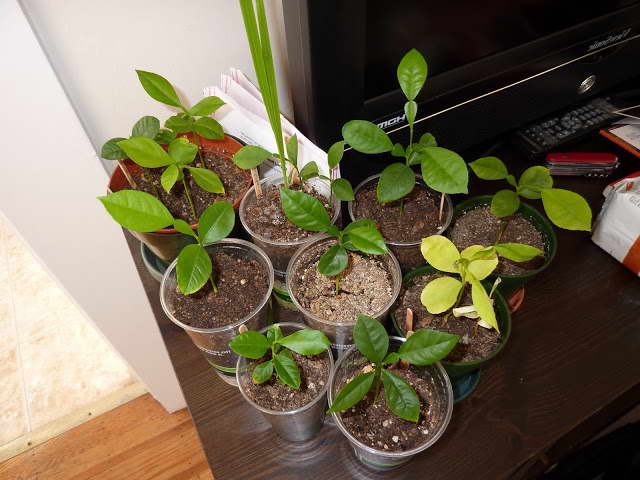

Bone kumquat at home growing and care
If you ate a dried kumquat and wanted to grow it at home, it is quite possible that you will succeed.
- The bone must be held in warm water for a day, and then planted in a plastic cup to a depth of its own size.
- Use a loose seedling medium, be sure to make a drainage hole.
- Place the cup on the south window and keep the substrate slightly damp without stagnant moisture.
- It is desirable to maintain the temperature at 22-24 ° C.
- To accelerate germination, the cup can be covered with a transparent lid, and removed when a sprout appears.
The kumquat will develop well under favorable conditions (albeit slowly), and when it reaches a height of 10-12 cm, transfer it to a larger pot and care for it like an adult plant.
Preparing cuttings for planting
It is best to "get" the stalk from experienced gardeners who have a kumquat tree in their arsenal, then the process will be the most effective. Tear off, not cut, one of the cuttings and try to plant it for germination as soon as possible. The simplest container for such purposes will be a disposable half-liter cup.
Of course, having created the necessary soil, you can safely start the growing process, because apart from wet sand and the greenhouse effect, nothing else is needed. The rooting process, alas, can be delayed, so using root processing to increase the growth rate will be very helpful. As soon as the roots reach a moderate length and are ready to form a "new life", they should be transplanted into another container, which must be carefully prepared beforehand, and the cultivation of an evergreen tree can be considered begun.
You can grow a kumquat indoors from a cuttings taken from a healthy fruiting plant. It is advisable to do this in April, before flowering begins. A stalk taken at a later date will take root worse and get very sick. A small shoot is prepared for cuttings, 5-9 cm long, having 2-3 leaves.
It is planted in a container with earth and covered with a jar. "Greenhouse" is placed in a bright place.The jar is periodically removed for ventilation, and the earth is moistened. After 1.5-2 months, the cutting should take root completely.
Kumquat at home: growing and care
Illumination
Place the kumquat in the room under bright lighting. In spring and summer, protect from direct sunlight by placing the kumquat on an east or west facing windowsill. The fruiting period begins in winter, the sun is less active and can be moved to the south side. Provide a moderately warm temperature regime. Keep the fruit tree cool (18-20 ° C).
How to water
Kumquats are hygrophilous. Watering is required regular and abundant, but without moisture stagnation. When the air is dry, the plant experiences discomfort. In summer, spray from a fine spray, and during flowering and fruiting, wipe the leaves with a damp sponge. For watering and spraying, take warm water, purified from chlorine and other impurities (filtered, settled, thawed or rainwater).
Pruning
The tree needs pruning. In the spring, 2-3 shoots should be left on the main branches, cutting off the rest. Also shorten the existing ones a little to stimulate tillering.
Top dressing
Regular feeding of kumquat stimulates its development and fruiting. The frequency of the procedure depends on the age of the plant, the size of the earthen coma and the soil used. So, an adult tree is fed more often. On average, during the period of active growth, potassium-phosphorus fertilizers are applied every 10 days.
The rest of the time, the frequency of fertilizing is monthly. As a fertilizer, it is permissible to use a solution: 1 liter of water will need 1/8 tsp. potassium chloride, ¼ tsp. ammonium nitrate and ½ tsp. superphosphate. It is useful to feed with a solution of wood ash.
Optimal room conditions
Do not assume that growing indoor kumquats is a simple matter. Like all citrus fruits, it is quite capricious and requires a lot of attention, so the plant needs not only to create a favorable microclimate, but also to know how to care for it.
One of the main conditions for the correct development of a tree is good illumination. Fortunella prefers a lot of bright, but diffused sunlight. Its deficiency affects the decorative qualities and fruiting of the plant - rich green leaves turn yellow, and the tree does not bloom.
In summer, the kumquat should be protected from overheating. To do this, cover the plant with a sheet of paper or cloth at noon so that it does not get burned. If possible, the plant can be taken outside, in partial shade. In winter, a sunny window sill on the south side of the house will be an ideal place for a tree. In cloudy weather, daylight hours are recommended to be extended artificially.
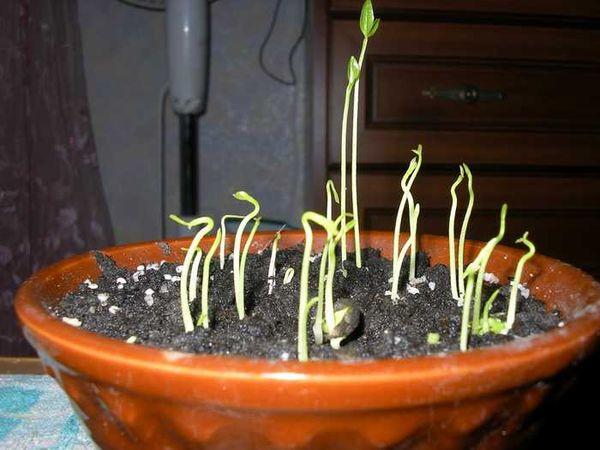

In the life cycle of the indoor kumquat, a short period of time is allotted to rest. The tree stops growing and sheds its foliage. During this period, it is recommended to place it in a cool (15-18 ° C) place and not disturb with watering and feeding. With an increase in daylight hours (end of winter), the kumquat pot can be put back on the windowsill and watering can be resumed.
Plant diseases and pests
The kumquat tree is affected by diseases inherent in citrus fruits. They are manifested by spots on the leaves, a change in their shape and shade, the formation of growths and a general drying out of the tree. Bacterial and fungal diseases (wart, gommosis, antarcosis) are subject to treatment. To accumulate the strength of the plant, you will have to get rid of the inflorescences and fruits, the affected parts are also cut off. Systemic fungicide treatments will be required to control the disease. If infected with viruses, you will have to get rid of the wonderful kumquat. It is better to spray the bush with Bordeaux liquid with a concentration of 1% in advance, in order to prevent it, during the period of active growth, carry out 2-3 treatments.
Without proper care, the plant becomes susceptible to pests, including sucking insects:
- Scabbards - light brown oblong midges are clogged on the leaves in the form of growths;
- Aphids are greenish, yellowish or grayish bugs that accumulate in groups on the tops of shoots and young leaves;
- Spider mite - invisible to the naked eye, but you can find entanglement with a thin cobweb, sticky bloom and dark dots on the leaves.
For mechanical cleaning, moisten the sponge with soapy water and wipe the kumquat leaves. If pests continue to multiply, insecticidal treatment will be required.
Limonella (limequat).
# 1 TovAr
Hey! The story is this: I recently bought a limonella in a greenhouse (it’s also called limmetta). I read from Dadykin that there should be about 20 leaves for 1 fruit, and that extra ovaries should be cut off even before flowering, and after the flower opens, it seems like it's too late to cut it off. I cut off the still unopened flowers at once, but all the same, the fruit, in my opinion, is too much for such a plant. Now he drops 2-3 leaves every day. I feed it a couple of times a week. I spray it with water (the humidity in the greenhouse was terrible). The cellophane bag on the crown, on the shedding of leaves, did not affect in any way. At the same time, they fought the pest. Presumably a spider mite. Were treated twice with phytoverm. The soil is very loose, the water passes through instantly. They say that our plants are sold in peat, and they need to be transplanted immediately. Now it is in quarantine away from the outer window. There is no direct sunlight.
Questions arose: 1) whether to cut off some of the small fruits? (there are 24 fruits in total for about 40 leaves) but adult fruits are generally small and don't seem to grow anymore, although the leaves are small 2) is the influence of the pest on the tick similar? 3) is it worth replanting now?
# 2 Tatyana Polupan
- Participants
- 520 posts
- Participants
- 71 posts
- Participants_
- 3,454 posts
- Participants_
- 3,454 posts
Necessarily! Where does he have so many ovaries? I would leave 1, maximum 2 - after all, the stress from the move is added.
Or a strong increase, and it seems to me, but it seems that the tick is smaller .. On the outside of the leaf there are no small, small, like a needle prick, yellow spots? And the tick begins to slowly move along the leaf if disturbed.
# 3 Maus
# 4 Odina
# 5 TovAr
# 6 TovAr
# 7 Odina
1. Of course, it is better to remove some of the fruits. 2. As for the tick - I do not know, I have not come across it. 3. I would postpone the transplant, first we need to get rid of the animals. Citrus fruits do not tolerate transplanting well. After all, you need to completely remove the earth from the roots. The plant may not tolerate double stress: pests and replanting.
Are you not afraid to process Fitoverm? Or are you not going to eat the fruit? Alex wrote somewhere that he used to cope with a tick with the help of frequent showers. Some types of mites do not like high humidity.
At one time, I managed to get rid of a spider mite on a hibiscus with the help of alcohol. Wipe the leaves with alcohol and under the bag for a week. One treatment was enough. Only alcohol is needed, not vodka.
Reproduction of kumquat at home
The golden apple can be obtained generatively, by rooting cuttings, layering, or by grafting onto the stock.
Growing kumquat from seeds is a long process, and such trees begin to bear fruit much later. If cross-pollination has occurred, unfortunately, the kinkan will not inherit the characteristics of the mother plant (of a particular variety or species). This breeding method is more often used by breeders.
Propagation by cuttings
At home, kumquats are propagated mainly by cuttings.
- Cut them in the spring from last year's shoots of an adult, fruiting tree.
- Tear off the leaves from the lower part of the cutting, and cut the upper ones in half, it is not superfluous to treat the cutting with a growth stimulator.
- Then plant in a container with moistened sand, cover with a transparent bag or glass (you can individually cover the cuttings with a glass jar or a cut plastic bottle), be sure to lift the structure for airing.
- Maintain diffused lighting, and provide a temperature regime in the aisles of 22-25 ° C, water as needed.
After rooting, new leaves will begin to grow and can be planted in separate pots with suitable soil. Further care as for an adult plant.
Reviews from the Internet about limequat
It originates from China. A small tree is grown as a container plant in the form of a bush. There are three varieties of limequat, resulting from different crosses of Citrus aurantifolia x Fortunella. They were bred in the USA, in Florida and named Lakeland, Eustis, Tavares after the cities of the state.
All varieties of limequat are very decorative, but they gained popularity not only with their spectacular appearance. The plant is not afraid of frost, is very productive and begins to bear fruit at an early age. Limequat fruits are small in size, oval or elongated, greenish-yellow or yellow in color, have a characteristic lime aroma. The peel is thin, sweetish in taste, but the fruit itself is sour.
CARE: Unlike some varieties of citrus fruits, limequat is not a complex, not picky plant in care. It is important that he has enough light, moderate watering and timely feeding, especially in summer and during fruiting. Usually grown in the form of a bush, because limequat starts branching at a young age and size.
APPLICATION: Widely used in cooking. Limonella oil has a reputation for clarifying thoughts, and therefore helps with headaches, migraines, neuralgia.
raduzhnaya
I bought a fresh limequat yesterday. I like it in the form of candied fruits, but the green dye in it, at times, is so poisonous and so much of it that I stopped buying at all. I got a fresh limequat at a price of 590 rubles per kg. This is Auchan. I bought 10 pieces. At Perekrestok it is almost 80 rubles more expensive and is sold not by weight, but in packages of 200 grams, it seems. The fruits look like this: Small, pretty, the zest is thin, soft, fragrant, without a white bitter layer like lime. The aroma of limequats is thinner than that of limes, a little more noble, closer to kumquats. The taste is sour, like lemon or lime, but not as sharp, 3-4 seeds per fruit. In general, nothing special! They are well blown into baked goods, tea, marinades ... Yes, wherever you can use lime or lemon ... I would even buy it often and even with pleasure, but provided that the price is at least 200 rubles per kg., And so ... I’ll hardly buy it yet. I want to try to plant a couple of seeds, suddenly it will grow in the room. At least in stores, we sell pots of fruiting limonella.
In general, I recommend the fruit, but I lower the estimate for the cost!
Mozzarella

